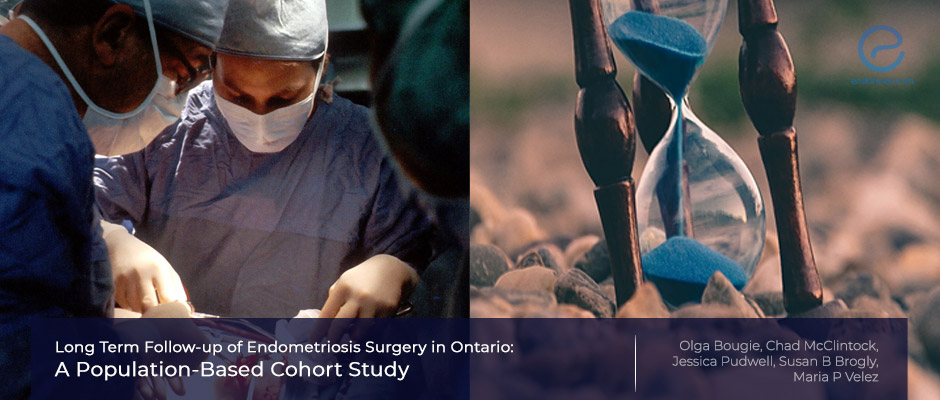What Happens to Endometriosis Patients After Endometriosis Surgery?
May 21, 2021
Few endometriosis patients who undergo hysterectomy require repeat surgery according to a study published in the American Journal of Obstetrics and Gynecology.
Key Points
Highlights:
- Women with endometriosis who have major surgery are less likely to seek medical attention for pain assessment, compared to women who have minor conservative surgery.
- Women who undergo major surgery are also less likely to have repeat surgery, especially in the first year following the operation.
Importance:
- These results are important for counseling for women who will be undergoing endometriosis surgery.
What's done here:
- Researchers conducted a population-based cohort study in 84,885 women, ages 18 to 50 with endometriosis who underwent surgery between April 2002 and April 2018.
Key results:
- Women who had only diagnostic laparoscopy were significantly more likely to need repeat surgery after one year.
- Women who had major conservative surgery with or without ovarian preservation were significantly less likely to require a second surgery.
- Women who had laparoscopy or major conservative surgery without ovarian preservation were less likely to have repeat surgery than women who had minor surgery.
- Women who had minor surgery initially were more likely to undergo a hysterectomy later.
- One third of women who had minor conservative surgery and one fifth of those who had major conservative surgery with ovarian preservation gave birth within five years of their operation.
Limitations:
- The stage of endometriosis that the women had, was not recorded in the database. Some women could even not have had endometriosis initially.
- It was not known if women were medically treated following their operation.
- The types of assisted fertility interventions that patients were offered and received were not available.
Lay Summary
Although few patients with endometriosis who undergo a hysterectomy need repeat surgery, up to 25% of them need minor surgery. Around 20% of patients who undergo conservative surgery with ovarian preservation require additional endometriosis surgery. Up to one in three patients who had uterine sparing endometriosis surgery later seek infertility assessment.
These results suggest that women with endometriosis should be offered counseling before surgery to inform them about the possibility of their symptoms recurring, the possible need for repeat surgery, and fertility outcomes.
In order to characterize the long-term outcomes of patients undergoing endometriosis surgery, Bougie et al. from Canada conducted a population-based cohort study. They analyzed a total of 84,885 women, ages 18 to 50 with endometriosis who underwent surgery over a 16-year period, and following results recently published in the "American Journal of Obstetrics and Gynecology".
More than a third of patients analyzed (33.6%) underwent major conservative surgery with ovarian preservation, 25.5% had a hysterectomy with ovarian preservation, and 25.4% underwent minor conservative surgery. Almost 10% of patients underwent hysterectomy without ovarian preservation, 3.2% underwent diagnostic laparoscopy, and 2.5% had major conservative surgery without ovarian preservation. The women were followed for a median of 10 years after their operation.
The results showed that women who underwent diagnostic laparoscopy were significantly more likely to require repeat surgery in the first year following their laparoscopy. On the other hand, those who had major conservative surgery were significantly less likely to require a second surgery.
Women who had laparoscopy initially but no repeat surgery in the first year following the operation were less likely to do so in the following years compared to women who initially had minor surgery. This was also the case for women who initially had major conservative surgery without ovarian preservation.
Women who initially had diagnostic laparoscopy and major surgery with or without ovarian preservation were less likely to undergo hysterectomy compared to women who had minor surgery initially.
Following minor conservative surgery or major conservative surgery with ovarian preservation, 38.6% and 33.3% of women sought an infertility consultation, respectively.
Almost a third of women who had minor conservative surgery (29.4%) and a little more than a fifth of those who had major conservative surgery with ovarian preservation (20.7%) had given birth at least once within five years of their surgery.
Research Source: https://pubmed.ncbi.nlm.nih.gov/33894154/
endometriosis surgery hysterectomy laparoscopy conservative surgery infertility ovarian preservation

